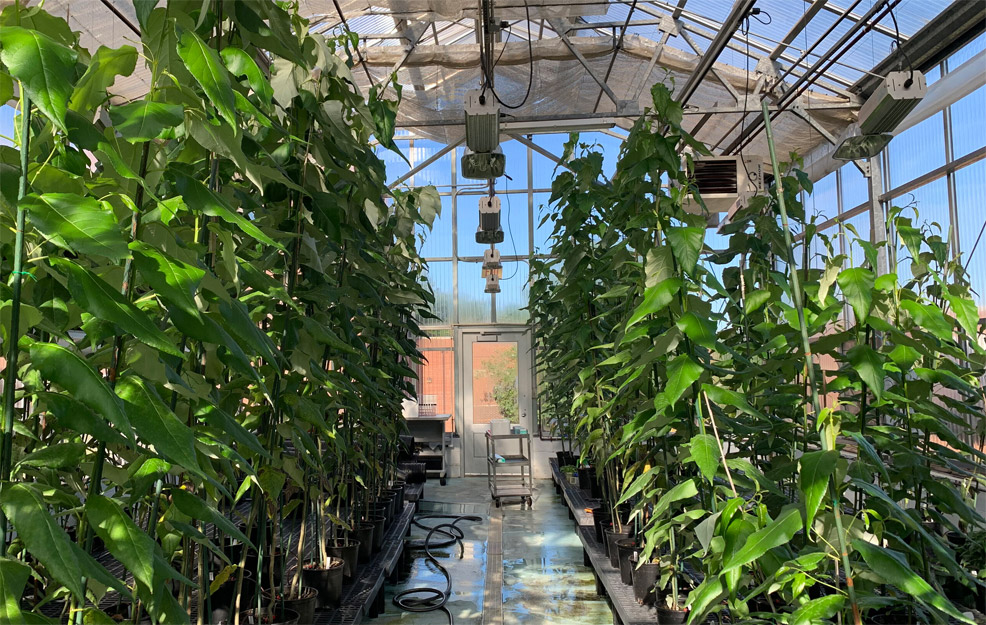
17th July 2023 Gene-edited trees are more sustainable and can boost fibre production Scientists have used CRISPR gene editing to reduce the lignin content in poplar trees by as much as 50%, offering a potentially more sustainable and efficient method of fibre production.
Lignin is a complex organic polymer that is integral to the structure of cell walls in many types of plants, especially in wood and bark. It acts as a type of binder in these walls, giving wood its hardness and resistance to rot. Lignin is the second most abundant natural polymer in the world, next to cellulose, and makes up between 15% and 25% of the composition of wood. In the pulp and papermaking industry, lignin presents a significant challenge as it must be extensively removed from the wood pulp in order to extract the desirable cellulose fibres. This process is both costly and environmentally damaging, due to the harsh chemical treatments and high energy use involved in breaking down and removing lignin. The global consumption of paper has more than doubled in the last 40 years. The removal of lignin can involve chemicals like sodium hydroxide, sodium sulphide, and sulphurous acid. These can leak from waste streams, contaminating ecosystems and food chains. The sector is also responsible for nearly 2% of all greenhouse gas emissions from industry – according to the International Energy Agency (IEA) – and is projected to miss the IEA's Net Zero Scenario for 2050.
Scientists at North Carolina State University (NCSU) have now used a CRISPR gene-editing system to breed poplar trees with reduced levels of lignin, the major barrier to sustainable production of wood fibres, while improving their wood properties. Their study, published in Science, could make fibre production greener, cheaper, and more efficient. This would improve a wide range of consumer items and materials, including paper, cardboard, textiles, hygiene products and more. The team used predictive modelling to set goals of lowering lignin levels, increasing the carbohydrate to lignin (C/L) ratio, and increasing the ratio of two important lignin building blocks – syringyl to guaiacyl (S/G) – in poplar trees. According to the researchers, these combined chemical characteristics represent a fibre production sweet spot. "We're using CRISPR to build a more sustainable forest," said Rodolphe Barrangou, Distinguished Professor of Food, Bioprocessing and Nutrition Sciences at NCSU and co-corresponding author of the paper. "CRISPR systems provide the flexibility to edit more than just single genes or gene families, allowing for greater improvement to wood properties." The algorithm predicted and sorted through almost 70,000 different gene-editing strategies targeting 21 important genes associated with lignin production – sometimes changing multiple genes at a time – to arrive at 347 strategies. More than 99% of those strategies targeted at least three genes. From there, the researchers selected the seven best strategies that modelling suggested would lead to trees attaining the chemical sweet spot – 35% less lignin than wild, or unmodified, trees; C/L ratios that were more than 200% higher than wild trees; S/G ratios that were also more than 200% higher than wild trees; and tree growth rates that were similar to wild trees.
From these seven strategies, the team used CRISPR gene editing to produce 174 lines of poplar trees. After six months in a greenhouse, a close examination of those trees found lignin content reduced by up to 50% in some varieties, as well as a 228% increase in the C-L ratio in others. Interestingly, the researchers say, the most significant lignin reductions were shown in trees with four to six gene edits. Single-gene edits failed to reduce lignin by much at all, showing that using CRISPR to make multigene changes could confer advantages in fibre production. The study also included pulp production mill models, suggesting that lower lignin in trees could boost pulp yield and reduce so-called black liquor, the major byproduct of pulping, which could help mills produce up to 40% more sustainable fibres. The improved efficiencies of production would also cut greenhouse gas emissions by up to 20% if reduced lignin and increased C/L and S/G ratios were achieved at industrial scale. Following this study, the team hope to use field trials to gauge whether the gene-edited trees can handle stresses provided by life outdoors, outside the controlled greenhouse environment. "An interdisciplinary approach to tree breeding that combines genetics, computational biology, CRISPR tools, and bio-economics has profoundly expanded our knowledge of tree growth, development, and forest applications," said Daniel Sulis, a postdoctoral scholar at NC State and the first author of the paper. "This powerful approach has transformed our ability to unravel the complexity of tree genetics and deduce integrated solutions that could improve ecologically and economically important wood traits, while reducing the carbon footprint of fibre production." "Multiplex genome editing provides a remarkable opportunity to improve forest resilience, productivity, and utilisation at a time when our natural resources are increasingly challenged by climate change and the need to produce more sustainable biomaterials using less land," said Jack Wang, assistant professor and director of the Forest Biotechnology Group at NC State.
Comments »
If you enjoyed this article, please consider sharing it:
|









